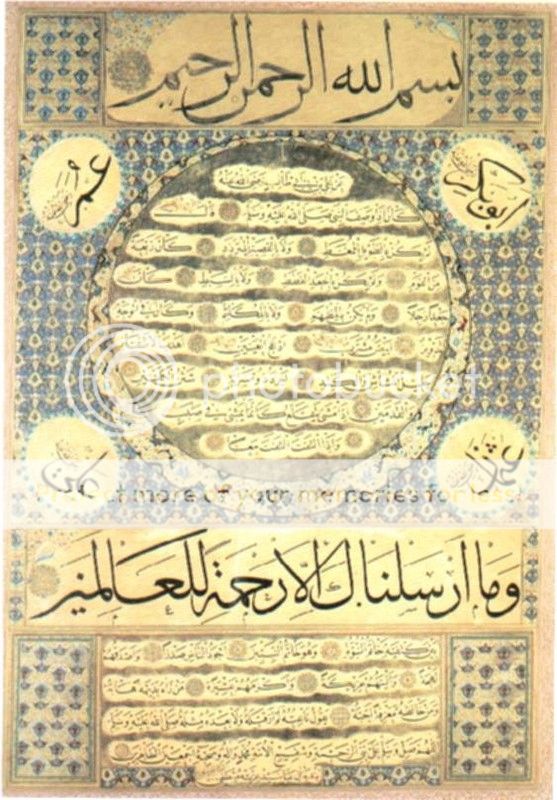GPS : 41°00'36.4"N 28°57'47.3"E / 41.010111, 28.963139

PHOTOGRAPHS ALBUM
Turkish Calligraphic Arts Museum, once a medrese of Beyazit Mosque in Beyazit Square, is the only museum of its kind. It contains a beautiful collection of calligraphy and illumination. There are also examples of calligraphy on stone and glass as well as the tools used in calligraphy. Now, calligraphy works of many famous calligraphers and calligrapher sultans, sheets, sultan monograms and Korans arranged according to type are on display.
The Beyazid Medresse, which was used as the municipality library since 1945 was evacuated, restored and reorganized as the Turkish Calligraphic Arts Museum. It has interesting and valuable examples of the Turkish art of the pen, Korans, imperial seals, diplomas, Hilye-i serif (descriptions of the Prophet), equipment and apparatus for calligraphic writing, samples of bookbinding, holy relics and miniatures, especially from Ottoman and Seljuk periods.
The Museum of Turkish Calligraphic Art is the first and only calligraphy museum in Turkey. The Museum was first opened in the madrasah of Sultan Selim located on Vatan Street in 1968. After the Bayezid Madrasah was restored by the Directorate of Religious Endowments, it was moved there and opened to visitors on October 28, 1984.
Restored in 2009, the museum is now located in what was originally the medrese (religious school) of the sixteenth century Beyazıt Mosque. Exhibits are housed in what were once the hücres, or cells, of the medrese. These hücres surround a peaceful courtyard featuring stone-carved calligraphy. The Dar'ül-Kurra, the section of the medrese where the reading of the Quran is taught, located in the courtyard, is accessible to visitors during the museum’s opening hours. It contains holy relics of the prophet Muhammad.
Within the collection of the Museum of Turkish Calligraphic Art, are Qur’ans written in of muhakkak, nesih, and küfi scripts. There are also handwritten manuscripts written in Indian and Moraccan scripts, as well as sheets, sultans’ signatures, symertic (aynali) manuscripts, madrasa diplomas, hilye-i sherifs "the attributes of the Prophet Muhammed(s.a.w.s)", and miniatures.
In the Holy Relics Section of the Museum, there are a Ka’bah cloth, the Prophet's (s.a.w.s.) beard (sakal-i sherif), a bottle in which some soil brought from the grave of the Prophet (s.a.w.s.), as well as miniatures depicting scenes from the cities of Madina, Mina, Muzdelife. Miscellaneous documents belonging to various religious orders, family trees, reedpens, which are historically and spiritually important works, enrich the collection of the museum.
Also on exhibit are examples of calligraphy by Sultan Abdülmecid (1823-1861), Ahmed III (1673-1736), and Mahmut II (1785-1839). There is a reading desk (rahle) made of rosewood and a walnut-tree, on which the Qur’an was read, owned by Sultan Abdulhamid II (1842-1918) which still continues to attract the attention of both foreign and domestic visitors. As such, the museum is one of the many historical places on the peninsula of Istanbul.
Calligraphy has always been recognized as a noble art, especially because it serves as a means of beautifying the text of the Quran. The Türk Vakıf Hat Sanatları Müzesi showcases the different types of calligraphy used during Ottoman times, with items like rare manuscripts and bookbindings on display. The museum also features beautiful tile art with a number of brilliantly illuminated Qurans that date back to the thirteenth century.
LOCATION SATELLITE MAP
WEB SITE : Türk Vakıf Hat Sanatları Müzesi
MORE INFO & CONTACT
E-Mail : istanbul@vgm.gov.tr
Phone : +90 212. 243 64 59
Fax : +90 212 243 64 59
These scripts and photographs are registered under © Copyright 2017, respected writers and photographers from the internet. All Rights Reserved.
No comments:
Post a Comment